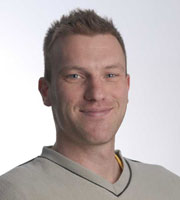Dr Bryce Dyer writes for The Conversation about the controversy around advanced running footwear known as ‘supershoes’ and how they work.
Supershoes have transformed competitive distance running, but they remain controversial
Bryce Dyer, Bournemouth University
On the face of it, competitive distance running appears not to have changed much since the Olympic Games were revived in 1896. However, even the relative simplicity of racing from gun to tape has radically altered in recent years due to the rise of advanced running footwear known colloquially as “supershoes”.
A few years ago, the Nike Vaporfly shoe kicked off a storm of controversy in athletics. It became a focus for claims about whether it provided some athletes with an unfair advantage over those not equipped with the shoes.
In 2019, Kenyan distance runner Eliud Kipchoge wore prototype Vaporfly shoes when he became the first athlete to run the marathon distance in under two hours as part of the Ineos 1:59 challenge in Vienna. Ultimately, the shoes avoided a ban just in time for the 2020 Tokyo Olympics.
Several years on, what more do we understand about these shoes and how they work? My recent paper attempts to review and answer ten key questions about supershoes as the Paris Olympics now loom on the horizon.
First, we need to understand what supershoes are and how they differ from
traditional running footwear. Initially, supershoes used a sole that saw a combination of material called a polyamide block elastomer (known by its tradename Pebax) coupled with the use of a carbon fibre plate.
At the height of the controversy, much was made of this plate, leading to claims that they were essentially springs propelling runners along. However, scientists now understand that, generally speaking, it’s the combination of all of the soles’ components working together harmoniously that’s behind the shoes’ success.
This broad effect has helped topple a raft of world records in the marathon and half-marathon distances. The shoes have improved times by roughly 1.4-2.8% or 0.6-2.2% in the men’s and women’s marathon events respectively over the last seven to eight years.
Today, other brands such as Adidas and Saucony have their own designs and
use different components in different ways. But the harmonious principle in the sole design is inherently the same.
Teeter-totter effect
Beyond the observation that all components are working in unison, a more detailed explanation of how the shoes work remains elusive because so many different influences can contribute to athletic performance. Among factors credited with the shoes’ enhanced performance are the thickness of the midsole and what’s been termed the “teeter-totter” effect, an upwards reaction force that passively enhances the propulsive stance of the runner. There’s also evidence against both of these ideas.
However, there is now strong evidence that supershoes reduce a runners’ oxygen consumption when compared to traditional running shoes. However, the scientific community isn’t in agreement as to how that is achieved.
Most studies focus on well-trained runners so it’s plausible that a recreational runner or those of a different age could see wildly different levels of performance enhancement than the elite runners we’ll see in Paris this summer. It’s also conceivable that the placebo effect could mean that simply knowing that you are wearing an advanced shoe makes you perform better in a race, regardless of whether the shoe helps or not.
As to the shoes’ acceptability, that is ultimately decided by the sport’s stakeholders and you, the spectator. Whether they are fair or not, new technology can either prompt people to use it or provide cost barriers that reduce peoples’ participation.
Furthermore, consumers can now purchase supershoe technology themselves. Whether they really want to or are happy to do so for something that may only be effective for a few hundred miles of running before the sole materials could begin to lose their potent mechanical properties remains equally contentious.
The use of supershoes has not been unchecked or challenged. In 2020, World Athletics, the international governing body for the sport, moved to limit this technology by implementing regulations that countered what it felt was contributing to the magnitude and frequency of records being broken.
In this case, the governing body’s rules centred on limiting the sole thickness, the number and complexity of any internal rigid structures (such as the carbon fibre plates) and the prevention of shoes that were one-offs and would therefore not be accessible for the consumer to buy.
Most leading running shoe brands have now released their own supershoes. The technology will undoubtedly evolve, so perpetual vigilance will be required by the World Athletics. Ultimately, supershoes have sometimes courted controversy, but they don’t seem to be going away and will remain an important part of distance running for the foreseeable future.![]()
Bryce Dyer, Associate Professor of Sports Technology, Bournemouth University
This article is republished from The Conversation under a Creative Commons license. Read the original article.
















 New Nepal scoping review on maternal & neonatal health
New Nepal scoping review on maternal & neonatal health Fourth INRC Symposium: From Clinical Applications to Neuro-Inspired Computation
Fourth INRC Symposium: From Clinical Applications to Neuro-Inspired Computation Writing policy briefs
Writing policy briefs Upholding Excellence: The Concordat to Support Research Integrity
Upholding Excellence: The Concordat to Support Research Integrity ECR Funding Open Call: Research Culture & Community Grant – Application Deadline Friday 12 December
ECR Funding Open Call: Research Culture & Community Grant – Application Deadline Friday 12 December MSCA Postdoctoral Fellowships 2025 Call
MSCA Postdoctoral Fellowships 2025 Call ERC Advanced Grant 2025 Webinar
ERC Advanced Grant 2025 Webinar Horizon Europe Work Programme 2025 Published
Horizon Europe Work Programme 2025 Published Horizon Europe 2025 Work Programme pre-Published
Horizon Europe 2025 Work Programme pre-Published Update on UKRO services
Update on UKRO services European research project exploring use of ‘virtual twins’ to better manage metabolic associated fatty liver disease
European research project exploring use of ‘virtual twins’ to better manage metabolic associated fatty liver disease